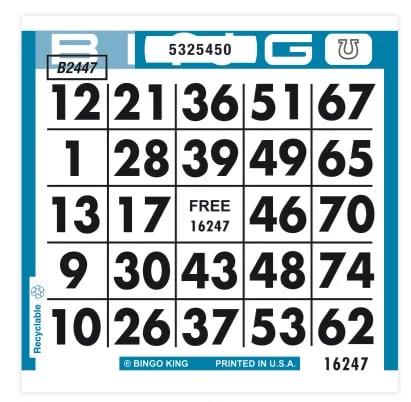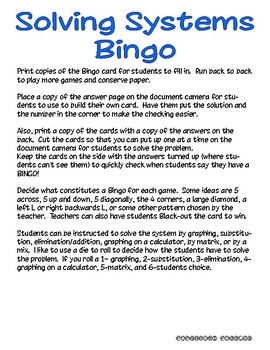Large Diamond Bingo
- Large Diamond Hoop Earrings White Gold
- Large Diamond On The Road
- Bingo Pattern Large Diamond
- Large Diamond Nose Stud
- Large Diamond Brooch
Sign-up for the Power Bingo event with the chance to win $500,000 in cash prizes and additional prizes up to $25,000. Event is on May 20-21, 2013. Register and secure your spot at Power Bingo. Welcome to Jackpot Valley. With over 75,000 square feet of gaming space, Desert Diamond Casino West Valley is where jackpots are a cause for celebration. We have the newest slots, table games, a Poker Room, and a Bingo Hall for your winning pleasure. There’s no better way to liven up your collar than with a unique piece from our collection of vintage and antique brooches and pins. From classic diamonds in platinum, to a simple bar or circle, to the endlessly fun and figural, our vintage brooches have come in nearly every shape and design you can imagine.
I have enjoyed your site for many years (decades now).
On your Bingo Probabilities 2 pages, you say (if I understand correctly) that (one-way only) patterns containing the same number of marks have the same expected calls.
But, don't you have to take into account the fact that some 'x Mark patterns' omit some of the columns - and, therefore, reduce the number of balls eligible to be called.
So, for example, on your Bingo Pattern Probabilities pdf, you show two 4-mark patterns (Inside Corners and Large Diamond Corners) having different expected calls. I'm pretty sure the different expected calls calculation is due to different numbers of columns being used for calling.
Or, have I just misunderstood your statement on Bingo Probabilities 2?
Administrator
Bingo probabilities 1
Bingo probabilities 2
Using that table we see that, for any one-way pattern of 4 marks, the expected calls is 60.8.
Yes, that is for only one card in play. But the implication is that for any n cards the expected calls should be equal.
Then in your pdf at /pdf/bingo-probabilities.pdf,
you show 4 CORNERS averaging 8.43 calls (for 300 cards), but the LARGE DIAMOND CORNERS pattern average is 11.86.
Both of those patterns are 4-mark patterns - so, if I read Bingo Prob 2's implication correctly, both expectations should be equal ... but, they aren't.
Further, I'm speculating that the unequal expectations (in the pdf) are due to the fact that the 4 CORNERS pattern omits 3 columns, leaving only 30 eligible balls to be called ... and the LARGE DIAMOND CORNERS pattern omits 2 columns, leaving 45 eligible balls to be called.
Thank you very much.
Administrator
We only need to concern ourselves with this document: Bingo Pattern Probabilities.
Let's just look at the case of 300 cards.
For the four corners pattern, it shows an average number of calls for somebody to win of 8.43 and an average number of winners of 1.39.
For the Large Diamond Corners pattern (if we think of the card like a 5x5 Battleship board, it would require marks on A3, C1, C5, and E3), it shows an average number of calls for somebody to win of 11.86 and an average number of winners of 1.29.
Both patterns have just one way to win and four specific positions on the card to cover. Why are the average number of calls and winners not the same?
The answer is a bit hard to explain, but those who have played a lot of bingo will probably get it.
The distribution of balls called by letter is not necessarily uniform. There will usually be a surplus of some letter and a shortage of others. The Four Corners pattern requires numbers in two columns only, and the Large Diamond Corners in three. The difference is the N column. If there is a shortage of N numbers called, then it's going to take the Large Diamond Corners to hit.
In general, patterns that require fewer letters to be covered tend to hit sooner and ones that require more columns tend to hit later.
I know this isn't my best explanation ever. Let me ruminate on it for a possibly better explanation. Or anyone else may chime in.
That's the (apparent) contradiction I was trying to point out.
In my view, it's easier to see the reason for the difference if you recall how Bingo is called.
For patterns that omit a column, balls for that column do get DRAWN ... they just aren't CALLED. (Ineligible drawn balls are silently recognized by the caller and simply put aside and the caller moves ahead. And, yes, sometimes this makes for an unpleasant delay in the 'action'.)
Functionally, this is the same as if they loaded the hopper with only the 30 eligible balls for the 4 CORNERS, and the 45 eligible balls for the LARGE DIAMOND CORNERS. And so, with less eligible balls to draw from, you naturally get a smaller number of expected calls for 4 CORNERS (8.43) than for LARGE DIAMOND CORNERS (11.86).
If all that's true, then the table 'Expected Calls to Cover Pattern of x Marks' is not correct in its claim that all x-mark (one-way) patterns have the same number of expected calls.
(It would be correct if you change it to 'Expected DRAWN Balls to Cover Pattern of x Marks' ... but that wouldn't be of much interest, I think.)
Administrator
If you are willing to say there is a difference in the expected calls for 300 cards for these two 4-mark patterns, shouldn't there also be a difference in the expected calls for 1 card?
Large Diamond Hoop Earrings White Gold
No. For one card the probabilities are the same.
Let's say the winning Bingo Pattern is the N column. Since the Free Space is irrelevant, that would be a 4-mark pattern.
Let's also say there is only 1 card in play.
Your table says the expected number of CALLS would be 60.8.
But, 60.8 is greater than the total eligible balls. The caller will only CALL N31 thru N45 ... a total of 15 balls. Non-N balls DRAWN will not be called ... they will be (silently) put aside.
So, as I tried to point out earlier, I think your table holds true for EXPECTED BALLS DRAWN, but not for EXPECTED BALLS CALLED.
If you still disagree, I will humbly admit to defeat and promise to not try to make my point again.
All the best,
Bob
Administrator

If The Wizard will indulge me just one more time ... a thought experiment, please.
Let's say the winning Bingo Pattern is the N column. Since the Free Space is irrelevant, that would be a 4-mark pattern.
Let's also say there is only 1 card in play.
Your table says the expected number of CALLS would be 60.8.
But, 60.8 is greater than the total eligible balls. The caller will only CALL N31 thru N45 ... a total of 15 balls. Non-N balls DRAWN will not be called ... they will be (silently) put aside.
So, as I tried to point out earlier, I think your table holds true for EXPECTED BALLS DRAWN, but not for EXPECTED BALLS CALLED.
If you still disagree, I will humbly admit to defeat and promise to not try to make my point again.
All the best,
Bob
That 60.8 counts B, I, G, and O balls. They will still be called. A ball is never silently put aside.
In the casinos and the bingo halls around here (Louisiana and Arkansas), any ball drawn that is not a possible hit is indeed put aside (as I described previously) and is not called..
This is done (I believe) to make the game go faster, since an experienced caller can recognize these non-playable balls and quickly move on.
In fact, if the caller mistakenly does call a non-playable ball, the crowd will let him or her know right away.
I appreciate your time with this, Mike.
Large Diamond On The Road

Let's just look at the case of 300 cards.
For the four corners pattern, it shows an average number of calls for somebody to win of 8.43 and an average number of winners of 1.39.
For the Large Diamond Corners pattern (if we think of the card like a 5x5 Battleship board, it would require marks on A3, C1, C5, and E3), it shows an average number of calls for somebody to win of 11.86 and an average number of winners of 1.29.
Both patterns have just one way to win and four specific positions on the card to cover. Why are the average number of calls and winners not the same?
The answer is a bit hard to explain, but those who have played a lot of bingo will probably get it.
The distribution of balls called by letter is not necessarily uniform. There will usually be a surplus of some letter and a shortage of others. The Four Corners pattern requires numbers in two columns only, and the Large Diamond Corners in three. The difference is the N column. If there is a shortage of N numbers called, then it's going to take the Large Diamond Corners to hit.
In general, patterns that require fewer letters to be covered tend to hit sooner and ones that require more columns tend to hit later.
I know this isn't my best explanation ever. Let me ruminate on it for a possibly better explanation. Or anyone else may chime in.
Bingo Pattern Large Diamond
I found this to be fascinating. I had to think about this for a while. Here's a way to illustrate the point you are explaining:
Large Diamond Nose Stud
Consider a game with an infinite number of cards in play (or in which every possible bingo card is in play.). The Four Corners game will be over the moment they draw 2 numbers from B(1-15) and 2 numbers from O(61-75). However, the Diamond Corners game will be over as soon as they draw 1 number from B(1-15) and 2 numbers from N(31-45) and 1 number from O(61-75). Combination math can now quickly explain the difference in the average number of cards drawn with these patterns (for the case of infinite bingo cards). For non-math people, you can explain that the two patterns have different numbers of the 75 possible balls that cannot possibly contribute to someone winning (which is pretty much what you said.)What's also evident is that a row pattern (say top row) and a column pattern, (say B column) both require 5 numbers but will have different average game lengths (as measured in numbers drawn) whenever two or more cards are in play - and the average game length will become progressively more different for the row and column patterns as the number of cards in play is increased.